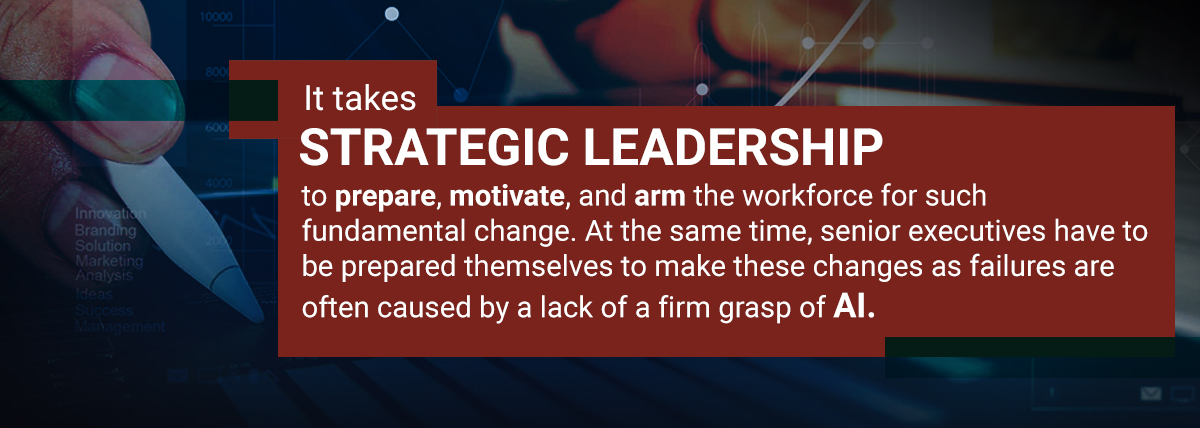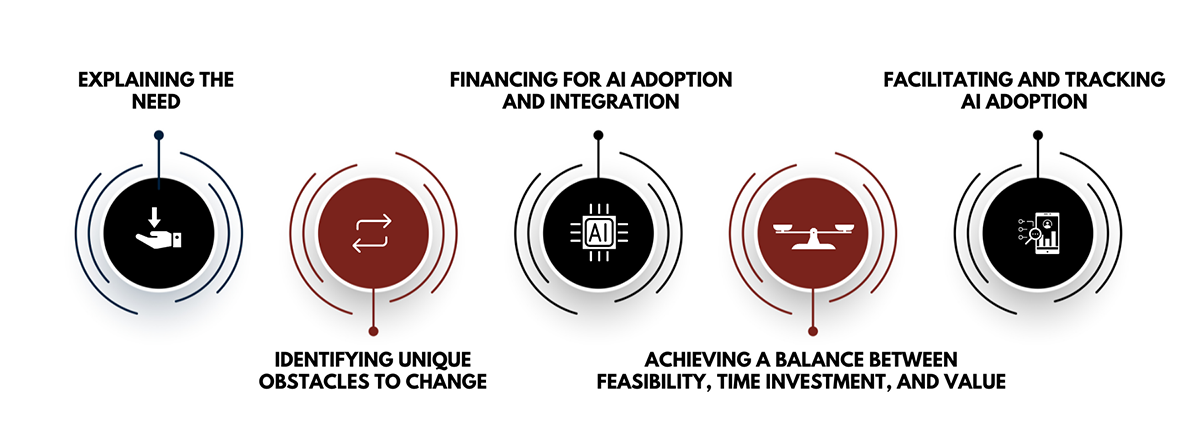Business Planning
Transforming Organizational Strategies with The Power of AI

The Business Potential of Artificial Intelligence: A Key Driver of Organizational Transformation
In today’s rapidly evolving economic landscape, organizations are faced with the imperative to embrace large-scale changes to stay competitive. The era of constant organizational change has become the new norm amidst a backdrop of shifting political, social, and economic dynamics. One innovation that stands out for its potential to propel businesses ahead in this ever-changing environment is artificial intelligence (AI). AI has the capacity to revolutionize operations, elevate businesses above traditional norms, and facilitate adaptability to the evolving dynamics of the business world.
The Business Potential of AI
The year 2016 marked a pivotal moment when the business world started recognizing the immense potential of AI. Since then:
-
AI software programs have demonstrated the ability to generate complete movie screenplays, predict outcomes like the Kentucky Derby, and even defeat world champions in video games – showcasing continuous technological advancements.
-
China has taken significant strides by implementing AI in over 1700 schools across 200 cities, emphasizing the widespread application of AI.
-
A team at Flinders University in South Australia developed a flu vaccine using AI that outperformed other existing flu vaccines, highlighting the potential for AI in groundbreaking scientific advancements.
With the ongoing innovations in organizational strategies, AI is increasingly becoming an integral part of every industry. Several Fortune 500 companies and numerous organizations are exploring the transformative impact that AI can have on their operations and overall business strategies.
According to McKinsey, AI is projected to contribute USD 13 trillion to the global economy over the next decade. A survey by Gartner revealed that over 37 percent of companies have already incorporated AI in some form. However, many organizations face challenges in scaling up their AI initiatives, often limited to ad hoc projects or isolated business processes. A study by Harvard Business Review (HBR) highlighted the significant cultural and organizational hurdles that AI programs encounter. Overcoming these challenges requires proactive leadership to leverage AI’s potential effectively for driving changes in business strategies and operations.
Shifting Gears to AI: Overcoming Roadblocks
One common pitfall among company leaders is viewing AI as a plug-and-play solution that delivers instant results. Investing in data infrastructure, AI software tools, and data expertise without a comprehensive strategy often leads to limited success in specific areas without substantial overall triumphs. Many organizations struggle to transition from pilot projects to enterprise-wide initiatives and fail to address broader business challenges through AI integration.
Changing the Work Approach
Business leaders often overestimate the technical requirements for AI adoption. While technological expertise is crucial, aligning a company’s culture, structure, and work processes is equally vital to foster widespread AI adoption. Traditional organizational attitudes that are not digitally native often clash with AI integration efforts.
- From Siloed to Interdisciplinary Work
AI initiatives thrive when developed by diverse, cross-functional teams with a range of skills and perspectives. Collaboration between business leaders and analytics experts ensures that AI efforts align with overarching organizational goals rather than isolated business objectives. Involving end-users in the development process enhances adoption rates and facilitates operational adjustments necessitated by new AI applications.
-
From Experience-Based Decision-Making to Data-Driven Decision-Making on the Front Line
Embracing algorithmic recommendations alongside human judgment enables organizations to make informed decisions that surpass the capabilities of humans or machines alone. However, instilling trust in algorithms and empowering employees at all levels to utilize data-driven insights requires a departure from traditional hierarchical decision-making approaches.
-
From Risk-Averse to Flexible, Experimental, and Adaptable
Embracing a culture that values experimentation and flexibility over perfection is crucial for successful AI integration. Viewing mistakes as learning opportunities and fostering a test-and-learn mindset accelerates innovation while minimizing the fear of failure. Early user feedback and iterative development cycles enable rapid refinement of AI applications, empowering small teams to deliver minimum viable products efficiently.

Paving the Way for Successful AI Implementation
To facilitate employee engagement and ensure successful AI deployments, leaders should focus on the following key areas early in the process:

1) Explaining the Need
Communicating the rationale for change through compelling narratives helps employees grasp the significance of AI adoption and its benefits. Addressing concerns about job security and showcasing how AI enhances business operations are critical steps in fostering a culture conducive to AI implementation.
2) Identifying Unique Obstacles to Change
Recognizing specific barriers to AI adoption within an organization, such as resistance stemming from established cultural norms, enables leaders to tailor their communication and investment strategies effectively. Understanding and addressing these obstacles are essential for successful AI integration.
3) Financing for AI Adoption and Integration
Allocating resources towards activities that drive AI adoption, such as workflow redesigns, training, and customized messaging, is crucial for organizations seeking to scale AI initiatives successfully. Investing in activities that facilitate organizational change is key to keeping pace with technological advancements.
4) Achieving a Balance between Feasibility, Time Investment, and Value
Prioritizing AI initiatives based on their complexity, implementation timeline, and potential value is essential for sustainable AI integration. Balancing quick wins with long-term strategic initiatives ensures a holistic approach to AI adoption that maximizes organizational value.
For instance, developing a portfolio of initiatives with varying time horizons allows organizations to leverage quick wins while laying the groundwork for more complex AI applications that yield significant value over time.
5) Facilitating and Tracking AI Adoption
Encouraging employees to compare outcomes with and without AI empowers them to recognize the tangible benefits of AI integration. Tracking the impact of AI on operational efficiency and outcomes can drive widespread adoption by showcasing the value AI brings to business processes.
In Conclusion
Organizations that successfully embrace AI across their operations gain a significant competitive advantage in an era where human-machine collaboration outperforms standalone efforts. As AI continues to evolve, organizations must adapt fundamentally, presenting challenges for business leaders to navigate carefully. Wide-scale AI adoption leads to decentralized decision-making, fostering collaboration, innovation, and organizational agility.
-

 Professional Development1 month ago
Professional Development1 month agoDrawing up your strategy
-

 Personal Growth2 months ago
Personal Growth2 months agoSucceeding as a ‘parentpreneur’: Top tips
-

 Videos2 months ago
Videos2 months agoGreat Leaders INSPIRE Others To Do Great Things
-

 Productivity1 month ago
Productivity1 month agoHow to Increase Remote Work Productivity
-

 Productivity2 months ago
Productivity2 months agoTips for Boosting Work Productivity
-

 Productivity2 months ago
Productivity2 months ago5 Ways to Increase Your Personal Assistant’s Productivity
-

 Leadership1 month ago
Leadership1 month agoHow to Tackle Big Challenges
-
Leadership1 month ago
Cutting Through the Clutter of Internal Communications































